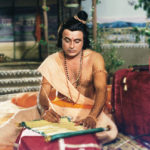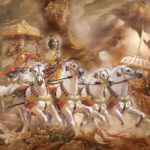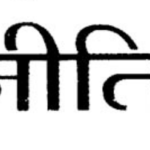Having discussed Governance & Administration of the State and Family respectively, one can now comprehend Governance & Administration of a Community. If rashtra is governance on the macro-scale, and vamsa is governance on the micro-scale, then samooha is governance on the intermediate scale.
As we’ve stated previously, when addressing complex problems, it is important to evaluate from different perspectives. This means understanding not only the parts or even the whole, but how they interact with each other, and ultimately, which must be prioritised at what time.
In our next article on Rajadharma, we discuss a critical concept that has gone by the wayside, and must be the next destination on this highway of governance: Public Works.
Introduction
Prasaasana, or administration, is both horizontal and vertical. There are different institutions across each level, as well as different levels. No topic examines this more obviously than Public Works. More than anything else, an administrator (prasaasaka) is accountable for putting taxes (kara) to good use in public works (janatha nirmaana). As we established in our previous article, the whole wealth of a state or nation or even region is not for individual vamsas or jatis to exploit or “dominate” in their own “domain”.
The state or region is there as an administrative unit for political elites to govern, ideally with dharmic advice from spiritual elites. Neither one can twist the dharma for their own enrichment, and if the both become corrupt or criminal , then vyasana is surely near. It may come in the form of divine judgment via natural disaster, or for the more “rational” among us, through the selling out of elites to foreign invaders, with predictable results for elites & masses alike (see past thousand years).
Therefore, taxes are collected in the public interest for public works, and ultimately, public protection and welfare. That is why governance is serious business, and not for families who don’t have “skin in the game” nor for people who don’t know which way is up. There are families who are content so long as they simply “have enough for 7 generations to sit and eat“. Such vamsas only want to eat into the public coffers rather than govern in the public interest.
Governance entails not only listing priorities but in prioritising them and executing in a timely fashion. That is what is required of an executive branch or executive class. That is why Rajadharma is the purview of the Kshatriya (whether by birth or otherwise). For too long, public administration has become synonymous merely with statecraft. Statecraft (Arthasastra/Rajyasastra) involves the application of institutions, and Politics (Rajaniti) involves the social actualisation of policy (naya). But Rajadharma determines the difference between sunaya (good policy) and kunaya (bad policy). Rather than arbitrarily dividing dharma from niti, it is time to view them as part of a complete and intersecting area of study:
Rajadharma encompasses Arthasastra which encompasses Rajaniti, and Krishna Niti is the guide for Rajadharma in the Kali Age. Sri Krishna’s priority was not merely preserving and propagating power for its own sake, but protecting the spirit of Rajadharma as embodied by Yudhisthira. All the strength (Bheema), all the warrior skill (Arjuna), good looks (Nakula), & forbearance (Sahadeva) in the world is of little avail without the wisdom of Krishna Niti. Therefore, both Niti and Dharma are required to balance each other and ensure good governance, for upper and lower classes alike.
King Rantideva prayed 'Give me all the problems of this world, so that I may not see anyone suffer any more'. Is there any better Social service?#Periyava
— Sage of Kanchi (@haraharasankara) February 11, 2018
The concept of noblesse oblige has gone out of fashion even in the land of its origin. When an elite associates “merit” merely with passing exams, performing poodle tricks, & vomiting factoids, what sense of responsibility will it have toward the common people?
Not all people have aptitude or interest in higher education let alone governance. Most are either too uneducated or too naive to be able to bear the burdens of governance. So who will look after their needs? Who will protect them from “exploitative mercantiles”, sanguinary feudals or hypocritical clericals? Competition in everything leads to a race to the bottom. If everything is a contract, no wonder the retirement funds of aged employees are plundered by corporate barons masquerading as politicians. Regardless of which system of government is espoused by a country, its political elite has a responsibility to look after, rather than feed on, the masses. What is the state of affairs today?
An elite that has no respect for fellow countrymen/countrywomen, and sees them as a separate species to be exploited (financially and otherwise), does not have long before rebellion and replacement stares it in the face. While the ancient, noble Vamsas of Bharatavarsha sought the welfare of their subjects, the least modern elite families could do is to give charity and patronage to those dependent upon it. Even if they do not see it as moral obligation, it is basic civic duty even in a liberal democracy. That is the purpose of all your degrees and distinction—to put them to good use for the benefit of all of society.
Putting your degree from Mahishmati Institute of Technology to Good Use
Terminology
Prasaasana—Administration
Prasaasaka/Prasaasikaa—Administrator
Adhikaari—Official/Bureaucrat
Niti—Principles
Naya—Policy, Sunaya—Good policy, Kunaya—Bad policy
Netr/Neta/Nayaka—Leader, Netri—Female leader
Netrtva/Nayakatva—Leadership
Janatha Nirmaana—Public Works/Civil Construction
Samudaaya/Samooha—Community
Devaalaya/Devaayatana/Mandira—Temple
Ghatika/Vidyavihaara—Academy
Mahavidyaalaya/Vishva-vidyaalaya—University
Vidyaalaya—College
Praudhashaala—High School
Veda Paatashala—School of Vedic learning
Paatashaala—Pial school/Grammar school
Gurukul—School taught by a spiritual person
Kalaashaala—Art school
Vinodhasthaana—Recreational/Pleasure ground
Akhaara—Martial School
Rangabhoomi—Arena
Kreedaanga—Playground
Vaatika—Gardens
Parnashaala—Garden House
Aaraama—Rest house
Chikitsalaya—Hospital
Patraalaya—Post Office
Pattana—Port
Rajapatha & Mahapatha—King’s Way & Great Road
Saranee/Maarga/Patha—Road
Uttaravaaha—Highway
Setu—Bridge
Vaapi/Koopa—Well
Saarasa—Pond
Kaasaaram—Water tank
Karsu—Furrow/Trench
Kulyaa—Canal
Koolyaa vyavastha—Canal system
Vaaripatha—Water route
Nadhipatha—River route
Koolyapatha—Canal route
Samyaanapatha—Sea route
Divyaantariksa—Sky water
Kaupa—Well water
Tadaagaja—Lake water
Audbhida—Spring water
Svayam viseernaadri—Stream water
Sheelaa talodbhava—Springs amid mountains
Vyavasaayam/Krishi—Agriculture
Annakoshtaka/Koshtagaara—Granary
Bhaanda—Barrel
Bhaara—Weight
Nirmaani—Mill
Langoora—Millet
Yantra shaala—Factory
Srama—Labour
Moolya—Price
Kara—Tax
Karamukta—Tax free
Sulka—Excise duty
Samavaaya—Association
Sreni—Guild
Srenimukhya—Guild leader
Praacheera—Barricade/Fence/Enclosure
Kudyaka/Kudya—Wall
Prakaara—Rampart
Kapisirsaka—Battlements
Parikha—Moat
Gopura—Tower
Thaarangana—Observation tower
Patamandapa—Gazebo
Pattashaala/Vasakutti—Tent
Kutti/Kutaja/Uttaja—Hut/Cottage
Stambha—Pillar
Public Works
कोष्ठागारायुधागारैः कृत्वा सन्नि चयान् बहून् || २-३-४४
तुष्टानुरक्तप्रकृतिर्यः पालयति मेदिनीम् |
तस्य नन्दन्ति मित्राणि लब्ध्वाऽमृतमिवाऽमराः || २-३-४५
तस्मात्त्वमपि चात्मानं नियम्यैवं समाचर |
“Like the celestials becoming happy after obtaining the nectar, friends of a king (ruler of earth) are delighted when he fills the granaries and armories to the brim, making the common people delightful and happy. Hence, you too act like this.” [1]
सर्वेषाम् स हि धर्म आत्मा वर्णानाम् कुरुते दयाम् || २-१७-१५
चतुर्णाम् हि वयह्स्थानाम् तेन ते तम् अनुव्रताः |
“Rama, the virtuous, had compassion towards all the four classes of men and towards the aged people. Hence, they were all devoted to him.” [1]
The Vamsa had a responsibility not only for the Raksha (protection) of the Nation and Paalana (Law & Order), but also its Yogakshema (Well-being/Welfare). This involves not only consideration for the citizenry and the helpless, but also endowment of public works. Between the three, raksha is the most important, but the most difficult to secure. Therefore, in the present time, when internal collaboration is at an all-time low and external collaboration (better termed ‘co-operation’) is at an all-time high, it is better to start with the basics: Yogakshema.
The most basic public works are possible where peoples and communities themselves can organise to execute simple projects. When governments and even administrative servants are themselves corrupt or incompetent, the people ultimately must depend upon themselves. Even where elite families are absent, even this basic community leader level of leadership is possible, whether it is in an agrahara or an agricultural township. People must be able to collaborate with each other at an horizontal level and work with competent administrators at a vertical level.
The lessons learned on the playground (kreedanga) or arena (rangabhoomi) are ultimately applied on the battlefied (yuddha bhoomi).
But what exactly are public works?
Public works are infrastructure or administrative efforts implemented in public interest. They are not mere vanity projects such as statues or white elephant giveaways with low public utility. Rather, they are societal constructions meant to improve the life of the common citizen, while minimising risk (medical, financial, or otherwise). But what to do when many governments and government officers are themselves incompetent or corrupt? The first step is to be able to work together as a community. Where people know how to cooperate, a good crop is soon harvested.
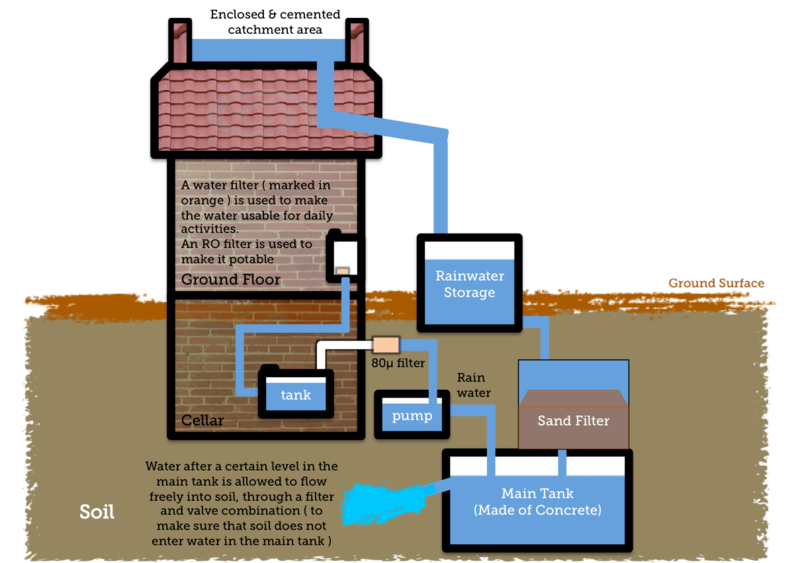
The beauty of collaboration is that you don’t need a tyrannical government for it. Neither a corrupt judiciary nor a criminal elite (whether political or spiritual or financial) are required for basic projects at the community or even family level.
However, large infrastructure and irrigation projects are beyond the strength of a single person, or often, even a large family. Collaboration with a team of experts, builders, and workers is required. Only a King or a Community working together can produce the requisite ingredients for the larger requirements of Yogakshema.
Yogakshema
“King is the root of the Tree of State; the Ministry is its trunk, the military chiefs are branches, the army are the leaves of the tree and the Subjects are its flowers, prosperity of the Country its fruits, and the whole Country the final seed.” [6, 341]
Construction of Irrigation works and Wells
Access to clean drinking water is essential to life on earth. How human beings access it is not wholly dependent upon a government, and yet, is nevertheless influenced by one.
The construction of wells, development of irrigation systems, and education on the responsible use of the groundwater table secures not only a secure supply, but a sustainable supply of drinking water for generations.
Lake Sudarsana
Long before Bellandur lake, was Lake Sudarsana. However ancient Indic approaches to construction and water use necessitated responsible behaviour by business and government alike. The ancient Lake Sudarsana in Gujarat dates at least as far back as the Maurya period, yet was made a household name by a poet of the most chaste Sanskrit. The Saka king Rudradaman was one of a number of Indianised monarchs who acculturised themselves to the civilization they decided to become a part of. Beyond his sanskrit couplets, Rudradaman I was notable for repairing the embankments around this lake to check flooding. His inscriptions are found nearby today.
Rani ki Vaav

Stepwells are famous throughout India, and have performed well even in the most drought-stricken of domains. Perhaps none is more famous than the Rani ki Vaav.
While we’ve heard of kings building memorials for queens, what of a queen building a memorial for a king? It is not for nothing that the Queen’s Stepwell is also the Queen of Stepwells. This heritage site in Patan, Gujarat exemplifies how form and function can meld magnificently together. Rani Udayamati of the Gujarati Chalukyas, built this in honour of her husband Bhima, in the 11th century CE. Sringara Rasa is the king of the rasas as kings and queens embodied it throughout the ages. This memorial is at once architectural and devotional, as its wonderful sculptures capture the Dasavatara while serving the water needs of parched prajas.
Dam Construction
Dams may be synonymous with hydro-electric power used today, but there is an ancient tradition of constructing them in Bharatavarsha. Long before turbines, there were water mills and artificial lakes that were formed through the responsible damming of rivers. Understanding how to balance is that is a question not of economic need or government statistics, but Dharma and Rta.

Kallanai Dam was constructed by Karikala Chola, and is dated to the 2nd Century CE. Though it was renovated during the colonial era, this ancient structure was constructed by an ancient Emperor who had the wisdom to distribute a portion of the Kaveri’s waters to irrigate the fields of paddy farmers.
Vijayanagara Aqueduct System

But all of these constructions can be conceived of as benefiting the elite and making possible its luxury consumption. What of the common man? The Saadharana manushya?
Aqueducts and canals are crucial to serving the needs of large metropolises such as the City of Victory. Aqueducts may be synonymous with Ancient Rome, but they were certainly known in Medieval India. Vast Vijayanagari was the capital of the largest Indian empire of the time, and had a large and hungry population of over 500,000. To meet the needs of the citizenry, water was brought in from the nearby Tungabhadra river as well as its tributaries.
Public Welfare
At least since the time of Ashoka (if not earlier), the construction of roads, rest houses, and wells for travelers has been the standard by which public welfare, as provided by the potentate, has been measured. At the Girnar rock edict, we find Ashoka Maurya stating the following, in order to benefit both men and cows:
“On the roads trees were planted, and wells were caused to be dug for the use of cattle and men. “
Hospitals were also constructed to provide free medical service to man and beast alike. After all, along with Ayurveda was Ashvayurveda, Gajayurveda, and Gavayurveda.
Hindu Kings took care of the poor, sick, old & orphans. Today's politicians speaking about Welfare State can't even come close to it.
— Sage of Kanchi (@haraharasankara) July 27, 2017
Transportation
Though not oft-discussed as an established aspect of Indic Engineering, bridge-building was another pivotal component of Public Works. The Setukavya of Kalidasa celebrated the construction of a bridge (setu) across the Vitasta river, by Pravarasena from Kashmir.
Along with roads and bridges, are also canals and ferries. While the canal systems allowed for transportation inland, and ports outland, ferries provide cheap and easy boat travel for the public-at-large. According to the ancient law, pregnant women, children, and adhyatmika brahmanas were not charged fares.
Settlement of Lands
The clearing and settlement of lands is an essential aspect of Public Works, simply because the public benefits where there is work. Usage of fertile land can take place responsibly through administrative oversight.
“The king shall avoid [settling] any part of the country which is liable to attack by enemies or jungle tribes and which is likely to be afflicted by disease and famine. He shall avoid excessive expenditure.” [4, 179]
Emergency financing and opening of grain stores
“the State under Monarchy in the eyes of the Hindu was a Trust. The object of the trust is clearly stated in the Sruti text which had to be repeated at every Coronation; ‘This State to Thee (is given)—Thou art the director, regulator, firm bearer (of this responsibility)—for (the good of) agriculture, for well-being, for prosperity, for growth (of the people), (that is) for success.” [6, 342]
“The earth is not the king’s, but is common to all beings enjoying the fruit of their own labour. It belongs, says Jaimini, to all alike; therefore, although a gift of a piece of ground to an individual does take place, the whole land cannot be given by a monarch.”[6, 331]
The one sixth of a farmer’s produce that was collected was not for the king’s dinner tables and stables only. Granaries (Koshtagaaras) and the food stock were not just for the ruling elite. They were also to be held in public trust in case famine affected the population. One recent example was in old Andhra Pradesh state, where a Chief Minister who cast national shadows not only introduced a mid-day meal programme to combat public malnutrition, but also collaborated with a spiritual figure to give access to water in a water-parched region. Hence, anna-chhatras (and langars) are not just for Mandir or Gurdwara, but Anna Canteens should also be constructed for the public benefit, preferably free-of-charge.
This stands in stark contrast to a supposedly “honest politician” who stated that opening of grain stores for the malnourished was “inefficient”. This is the difference between pure theory “economics” and Arthasastra. Pure efficiency (whatever that means…) is secondary to public well-being. A government with no humanity is a tyranny. Therefore, in times of famine, the opening of food and water stocks is a near-must, tempered only by the exigencies of total warfare against a nation. Rather than assuming that “the market will take care of it“, a government must be active in preventing price-gouging at the public’s expense (whether financial or medical).
Paalana
https://youtu.be/XxBFNQJDi8E
“A kingdom is not partible, because accord-ing to the Saastra it is not the property of the king.” [5, 337]
Aarakshaalayas
Construction of aarakshaalayas (better known as police stations) is not only a matter of a political figure enforcing writ. In fact, the main purpose of a police officer is to “protect and serve“. But in the present time, where they serve as near-bodyguards subject to the whims of Chief Ministers, it is key to remember their core purpose: to ensure law and order in an administrative unit. Rather than hassle and harass the populace, they must seek to earn its trust and build confidence with and in a community. That is what it means to be an aarakshaka or dandapaani.
Krama & Rta
We find numerous stone inscriptions that record the fact that some King donated land to Vedic scholors and patronized Vedic studies.#Periyava #Hinduism
— Sage of Kanchi (@haraharasankara) August 24, 2018
Part of preserving law and order is practical and part of it is spiritual. Along with vidyalayas and vishva-vidyalayas is the imperative to endow Veda Paatashaalas. Indeed, this is what preserves Rta, or cosmic moral order, according to our spiritual tradition. Other Dharmic Panths naturally have their own institutions too that can be considered.
Construction of Temples
As apparent in Sthaapatya Veda, the construction of shrines and temples for the public spiritual need was part and parcel of ancient city and even village planning. Endowments for these Aalayas of Devas was made possible not only by the Government, but also by eminent families.
None of the history authors mention the fact that our Kings cared for renovation of Temples followed by Kumbhabhishekam#Periyava #Hinduism
— Sage of Kanchi (@haraharasankara) April 25, 2018
“That is why Indian thinkers have emphasized holistic philosophies rather than taking partial view of world…Dharma stands for that principle, that law, that order, which keeps up unity, harmony and solidarity of all created objects….Dharma is the very foundation of this universe (dharmo’sya Vis’vasya ‘ jagatah pratishta”. [7, 11]
Saucha
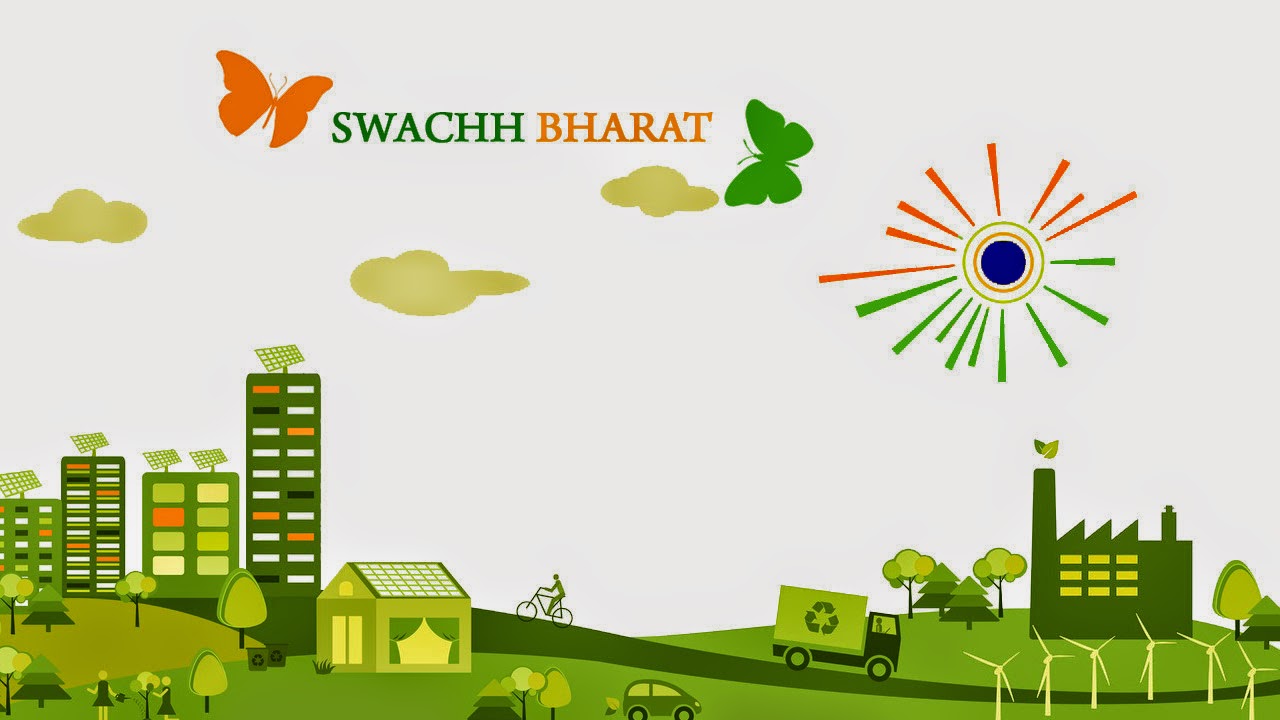
An key part of keeping order revolves around cleanliness. Bharat ganarajya may have gotten a bad name in this department, but ancient Bharatavarsha stressed the need for clean surroundings, both inside and outside the home.
Pradhaan Mantri Narendra Modi’s Swacch Bharat Programme is a welcome return to this tradition.
Raksha
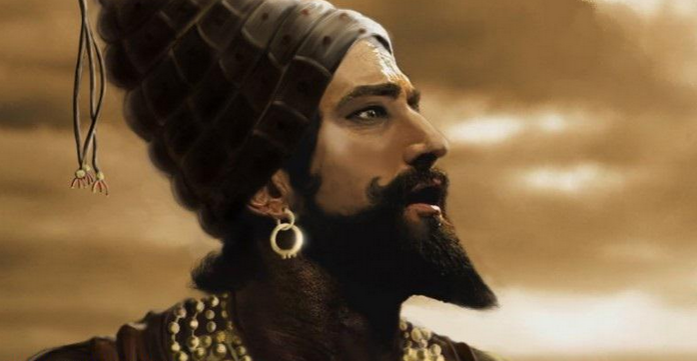
“Hindu kingship is the highest ideal of sacrifice on the part of the individual whose privilege it was to be the king of the Hindus.” [6, 340]
Forts and military bases are necessary for the defence of a nation, but so too are advance warning mechanisms. These may take many forms with the advanced technology of the present time, or they may be as simple as observation posts at key passes & border crossings.
The Maratha Queen Ahilyabai Holkar constructed many temples, even renovated the desecrated temple of Kashi Vishvanath at Varanasi. But she also repaired many forts, built roads and rest-houses, and governed the Malwa region well. She is remembered as a great administrator as she understood the importance of planning for peace and war, and serving the populace accordingly. She even had the wisdom to warn against trusting coloniser phirangis.
But the first step for any incipient polity or government is to secure its borders. From land reform to appointing efficient administrators to establishing a stronghold at Lohgarh, Banda Bahadur Singh demonstrated the need for quick action, a support infrastructure, and a good intelligence network.
Thaaranganas
The simplest and easiest thing to construct for the benefit of a state’s security is an observation tower. Not every inch of land can be covered by border security or a wall. But thaaranganas at key checkpoints or mountain passes allow for a government or a community to receive advance warning of incoming adversity. It can be as simple as a house on a hill, or as large as a tower of victory. The main purpose is to provide full view of the surrounding land, because as we know from the Panchatantra, forewarned is forearmed.
Trenches
Trenches are useful not merely as adjuncts to canal systems, but also as the first step to a proper moat. Sthaapatya Veda makes provision for this as well. Trenches are useful not only as channels for water usage or sluices for sewage, but also were obstacles in any age.
Walls

Whether it is a mud wall or the Great Wall (of Kumbhalgarh), another all-important aspect of public works is a centerpiece of public safety. It not only keeps invaders out, but also keeps livestock in. Whether it is a fence or a wooden redoubt, walls are multi-purpose constructions for public protection.
Akhaara

The Akhaara may be most associated today with a party to the Ayodhya suit, but long before Nirmohi became an household name, this public work of the martial variety became a public bastion. It was here that mighty Jarasandha was slain by Bheemasena, in a wrestling match that would change the strategic landscape in the lead-up to the Kurukshetra. But this institution is more than a mere gymnasium.
An excellent way for a community to protect itself is to produce its own protectors. While historically brahmanas were denied the right to take up arms, in the present time it is advisable for their own protection at the community level. By organising communities at the Akhaara level, all will be able to have a say in community administration. There will also be direct accountability for funding allocation, which doesn’t occur at temples due to Deity Jewelry expenditure, etc. Mandira is the bastion of Culture, and Akhaara is the bastion of Community, with the Prasaasana harmonising the two. In the absence of the third, the Akhara can serve as the de facto public square or town hall to discuss issues of common importance. Within the circle of the Akhaara or the Arena (rangabhoomi) all are equal and have equal say in immediate community priorities.
Financing Public Works
There is no one ready to get down to practical work to correct the apparent ills of the society. They just talk & talk.#Periyava #Hinduism
— Sage of Kanchi (@haraharasankara) July 19, 2018
Financing Public Works is no easy task. Particularly in the present time when government and municipal bonds have led to all sorts of shenanigans. Therefore, the simplest way being the most sustainable, public works are best financed from the community’s own earnings.
Indeed, the Arthasastra corroborates this assertion quite clearly.
“According to Kautilya, in case of an economic crises also the king had to collect the extra taxes from the people. One-third or one-fourth of the total produce of big, medium and small Janapadas was collected as taxes.” [5, 105]
“One-fourth of the land produce and one-sixth of the forest produce were also taken as taxes. One-fiftieth of the total cost on the commercial products like gold, silver, diamond, pearls, etc., one-fortieth of cotton clothes, metals, herbs, etc, one-thirtieth of crops like wheat and oil, ghee, iron etc., one-twentieth of crops of income from big merchants and artisans and one-fifth of woods, bamboos, stones, earthen ware, etc. were collected as state taxes. But it was collected only once and not twice.” [5, 105]
However, Public Works were the responsibility not only of Kings and noblemen, but also Queens and ladies of elite families. Along with general charity, dynasties were expected to look after the general welfare, be role models of culture, fashion, and civic virtue. Taking pride in one’s city & country was all too common for Rajavanshis, and indeed, underscored their greatness, but there is nothing stopping a community from pooling its resources together and appointing a trustee to oversee a project. Local guilds (sreni) and even temples could and would often contribute to construction. Loans from a bank (vittakosha) and bills-of-exchange (hundika) from the kreni (market) should be the last resort, and not the first for financing.
A true leader is a man or woman of the people. And nothing demonstrates this more than public works.
Patronage
“The word Raajaa or ‘Raaja’ originated from ‘ranj’, i.e. to please the people. Prithu was the first king to please his subjects by protecting the law and maintaining and efficient government.” [5, 35]
Protection & promotion of a rashtra’s culture is part & parcel of being a political Patron. Public works, therefore, must also take into account the preservation of Arts & Crafts in a region. Handicrafts range from textiles to toys, yet support for handloom is arguably one of the most basic ways to have public works work for the public.
Handloom runs the gamut and across the country. From the famous Kanchipuram to the royal Mangalagiri, and in between is lovely Odisha Handloom, and its numerous styles of textile. Yet the sponsor and provision of handlooms can lead to livelihoods for the least fortunate. Indeed, according to the Arthasastra, the state had a responsibility towards widows and unprotected women. Government textile factories offered them a chance at dignified employment. [4, 333] These and other handicraft traditions should be given patronage by Pradhaan and Mukhya Mantri alike.
Artists and Poets are also dependent on public patronage. In the present time, due to the unsavoury international business interests that finance them, they have been given a bad name. But that is all the more reason for prominent business and political families to support artists and poets, to ensure that they hew to the proper aesthetic.
The same applies to the vast array of Chefs and Soodas that are required to revitalise Ancient Indic Cuisine. The Culinary Arts are of great import, particularly when international scholarship slanders a civilization by claiming everything was imported. Here too can a venerable Vamsa demonstrate its culture. This is not merely a manner of employing a cook (paachaka), but also in encouraging table manners, dining etiquette, dining halls, and appreciation of the finer things in life, at the proper time and place, and in the proper manner. When Rajas or Nayakas finance or employ such endeavours and public works, society as a whole benefits.
Vyasana

“The king has been called the protector of the helpless, shelter for the homeless and father of orphan.” [5, 52]
Vyasana comes in many forms. Hari Singh Nalwa was a great protector from vyasana by becoming a veritable calamity to mlecchas himself. But the more traditional meaning of vyasana referred to the great natural catastrophes that any society is subject to over time. A responsible Raja, therefore, prepares well in advance for such eventualities.
“The king generally used to collect one-sixth of the income or produce of his subjects…But in case of emergency, particularly in the event of war, the king was at liberty to collect heavy taxes from his subjects. But before doing so the people had to be informed about the nature of the emergency and the necessity of collecting taxes from them.” [5, 104]
Vyasana is not merely judgment from vaikunta, but also avakaasa (opportunity) for a community or nation to rebuild and show its character. It is an event that every responsible government must prepare for and take adequate steps not only to protect in the event of, but clean up in the aftermath. It’s not a simple question of restoring electricity or giving compensation, but of considering the public health and safety well in advance of law and order breakdowns.
Public Shelters
In times of Vyasana, even the temple would contribute. The king was permitted to take a reasonable portion of Temple funds in the event of emergency. Furthermore, while the sanctum sanctorum (garba gudi) may be off-limits to the general public, the outlying areas of a temple could be expected to open to temporarily shelter a population during devastation or inclement weather.
However, wise rulers should construct designated public shelters in the event of catastrophe.
Disaster Management
Much noise has been made in recent years about the responsiveness and even nature of federal emergency management. For this reason, it is crucial to create state and even community disaster management institutions. At the very least, civic minded citizens should come together and ask “what to do in the event of?“.
It’s not a simple matter of having a few blankets on hand, or even knowing where to go, but also stocking up on food and water stocks if existing ones go bad or are washed away. It means having a plan for the unexpected.
Civic Virtue
I pray to God Parameswara to make Dharma a functional proposition in India and to become a guiding light for the entire world!#Periyava #Hinduism
— Sage of Kanchi (@haraharasankara) February 13, 2018
Civic Virtue is a concept decreasingly covered even in liberal democracies. Any government or administration can only do so much if the people themselves are uncooperative, or in the case of Bharatvasis, behave like absolute children. Emotional discipline and thinking in the common interest must be ingrained at an early age.
No legal regime can correct an habitually immoral, corrupt, and even criminal populace. Only dharma can set the standards by which decent and honest men and women can live in harmony.
“The relationship between the king and his subjects was mainly based on their mutual obligations towards the state.” [5, 42]
That is the centrality of Dharma. Dharma is not merely a pie-in-sky divination of divine portents, but a practical solution to serious problems that face society. That is the point of Rajadharma, and why it is the not only the Dharma of Kings, but the King of all Dharmas. This is because it governs not only a kingdom or even a king, but raja and praja alike. All human beings have emotions and sentiments and impulses, but fundamentally, Dharma is about governing all of these so we can exist in an harmonious society on our path to perfection. It is Rajadharma that makes Dharma a functional proposition that balances both the practical and spiritual wings of society, and governs all four classes.
To say that the rules of Dharma Sastras are inconvenient and not practical in day-to-day life is incorrect and illogical.
— Sage of Kanchi (@haraharasankara) December 1, 2014
Therefore, Rajadharma is something which doesn’t just start with the Raja and end with the Praja. Rather, it is a conceptual guidestone for the entire spectrum, and ending with a Praja dharma for the common citizen. Civic virtue may not be a native notion, but Praja dharma certainly is. And for the whining winnows of Bharatavarsha, praja dharma has become all but forgotten. It is far easier to alternate between breast-beating and chest-thumping than to come up with solutions. And the time for that to change has finally come. If public works are to work for the public interest, then the Praja too must do his Dharma and keep the “rajas” of the republic accountable. And where they fail, replace them or work in parallel to them. For a nation that seeks to govern itself, sometimes states must exist within states, before replacing the existing regime.
Conclusion

‘All men are my children. I am their father’ .
—Emperor Ashoka Maurya
Paternalism may no longer be considered proper in polite company, and yet, even the most controversial of Emperors could view themselves as fathers to their subjects. Much water has flowed down the Ganga since the time of Ashoka. Whether he was tolerant Buddhist or tyrannical emperor (or both), the basics by which we know him today matter more than ever before.
Arguably the Sikh Gurus revived the holistic spirit of this multi-spectrum administration. Rather than disconnected “jagirs” at the mercy of exploitation, the dasvand was set aside for public welfare in times of need.
In a time of administrative dashboards and e-pragatis, it is also incumbent on us to keep track of the dharmic dashboard as provided by Rajadharma. Statistics are all well and good, but what ultimately matters is whether governance is being delivered at the national and state level as well as on the ground. Are the mills and power plants financed by community earnings or foreign-financed recipes for disaster? Are public debt levels being reduced or increased? Are people’s lives being improved or are their liberties being destroyed?
All these are elements to be considered in the construction of public works. That is why rather than considering it as separate from Rajadharma, Rajadharma itself must be used to analyse and ultimately determine its utility. Utility is not merely a question of utilitarianism or constructing of public utilities, but a matter of public utility and ultimately public interest. What serves a given government may not serve the general good. That is the purpose of governance. It means that at some point, all parties (political parties or otherwise) must put aside their electoral calculations and ask “What is in the Community, State, or National interest?”
That’s how a serious country or community works & that’s the purpose of Public Works.
References:
- The Ramayana
- The Mahabharata
- Vidura Neeti
- Rangarajan, L.N. Rangarajan, L.N. Edit, Kautilya. The Arthashastra. New Delhi. Penguin.1992
- Singh, G.P. Political Though in Ancient India. New Delhi: DK Printworld. 2005
- Jayaswal, K.P. Hindu Polity: A Constitutional History of India in Hindu Times. Delhi: Chaukhamba Sanskrit Pratishthan. 2005
- Kaur, Parminder. Sikhism In the Context of Indian Spiritual Tradition. Patiala: Gracious Books. 2009




